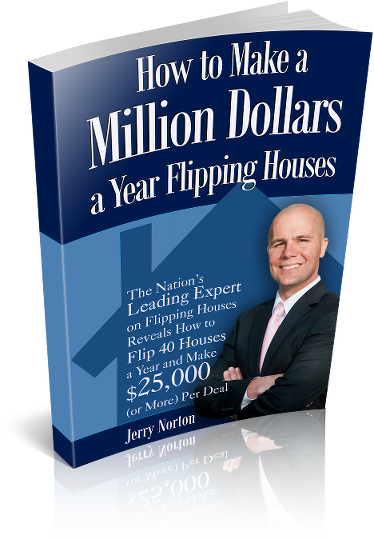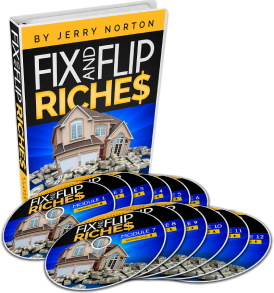
Flipping Houses | Two Step Process to Buy More Deals and Make More Money
Most new and aspiring real estate investors as well as many seasoned investors are under the assumption that the only way to do deals is with “cash.” And when I say “cash” I am referring to easily accessible, asset based financing such as private funding and hard money lending.
I personally do most of my deals using private funding from individuals who lend me their money at 8-12%. However, once an investor learns creative financing strategies, it’s like an entirely new world of possibility opens up. Let me explain why.
When you are making offers that are “cash” (whether it’s personal funds, private or hard money), you are essentially saying to a seller, “I can close on this deal without a financing contingency, therefore I want a smoking good deal”
Whether you communicate it that way or not the message is:
Cash = best possible price.
 It has to be that way. Cash deals only work if the equity position in the deal is strong (typically 65% LTV). And the ROI has to be awesome for tying up the cash and you more than likely have carryingcosts (cost to borrow the cash) that is adding up until you exit the deal (flip it).
It has to be that way. Cash deals only work if the equity position in the deal is strong (typically 65% LTV). And the ROI has to be awesome for tying up the cash and you more than likely have carryingcosts (cost to borrow the cash) that is adding up until you exit the deal (flip it).
While there is nothing more powerful than saying, “I’m a cash buyer and can close quickly” there are other options that can give you even more opportunities. I’d like to discuss a few in this article.
I typically approach deals in a 2-step process with cash first and terms second. The best way to explain this is to use an example.
Let’s say I want to buy a lot to do a new construction deal (click here to learn how to make $8,700 for finding me vacant lots) and the lot is list for sale for $99,900 and I determine that it would fit by new construction formula to buy the lot for $70,000 cash.
 Now if I can buy the lot cash at $70,000, I would use one of my private investors to fund the lot purchase and I typically calculate it taking 1 year to exit the deal (build and sell a new home). Let’s suppose my private lending cost is 12% to fund the lot purchase.
Now if I can buy the lot cash at $70,000, I would use one of my private investors to fund the lot purchase and I typically calculate it taking 1 year to exit the deal (build and sell a new home). Let’s suppose my private lending cost is 12% to fund the lot purchase.
My total carrying costs for 1 year would be:
$70,000 x 12 = $8,400
Keeping that in mind, let’s go back to the deal. I would make an all cash offer for let’s say $65,000 to give me room to counter (remember $70,000 is my max buy price).
Well the chance of the seller accepting this cash offer is slim (remember, he’s got it listed for $99,900). Let’s say he’s motivated and counters back at $85,000 cash.
This is where I’ll come back with a terms offer. I’ll say something like this...
“Mr. seller, Due to the time frame it will take me as an investor to buy your lot and build and sell a home, buying with cash will only work if I can get it for $70,000 max. However, I would be willing to pay $80,000 if I could acquire the lot on terms. Here is what would work for me:”
- $80,000 buy price
- $8,000 down payment (10%)
- $72,000 seller carry for 2 years
- 7% interest only, deferred payments
Now let me explain what I just did and why. I just offered him $10,000 more to seller finance it for me. Here are the benefits to the seller and me:
Benefits to me:
- I have more breathing room to turn the deal (2 years instead of 1)
- I am not making monthly payments on the interest (“deferred” means I pay back the principal and accumulated interest at the end of 2 years or when I sell the property, whichever occurs first)
- My annual interest is $5,040 (72,000 at 7%) instead of $8,400 (70,000 at 12%)
- I can save my “cash” investors for other deals allowing me to do more deals.
Benefits to seller:
- He initially gets $10,000 more for the deal ($80,000 instead of $70,000)
- He earns $5,040 in annual interest (which really means after 2 years he would get another $10,000 making his total payout $90,000 which is $20,000 more than the cash offer of $70,000.
- Stops the bleeding on owning the lot (I start paying property taxes, HOA fees, etc). This tends to be a big motivation for many sellers who can wait to get all of their money but are tired of paying the fees to own the property.
- Gets $8,000 down payment so he feels good about skin in the game and he has a little cash if he has to pay a real estate agent a commission or whatever.
I can’t tell you how many deals I’ve done using this 2-step strategy that I would have otherwise missed out on.
Remember, smart business owners (real estate investors) are all about solving problems.
The better you are at finding creative solutions to problems, the more successful you will be.
If you found this article helpful and/or informative, share it, like it and leave a comment below.
Until Next time, Happy Investing,
Jerry Norton
Click here to get a FREE copy of Jerry’s best selling eBook, “How to Make a Million Dollars a Year Flipping Houses.”




